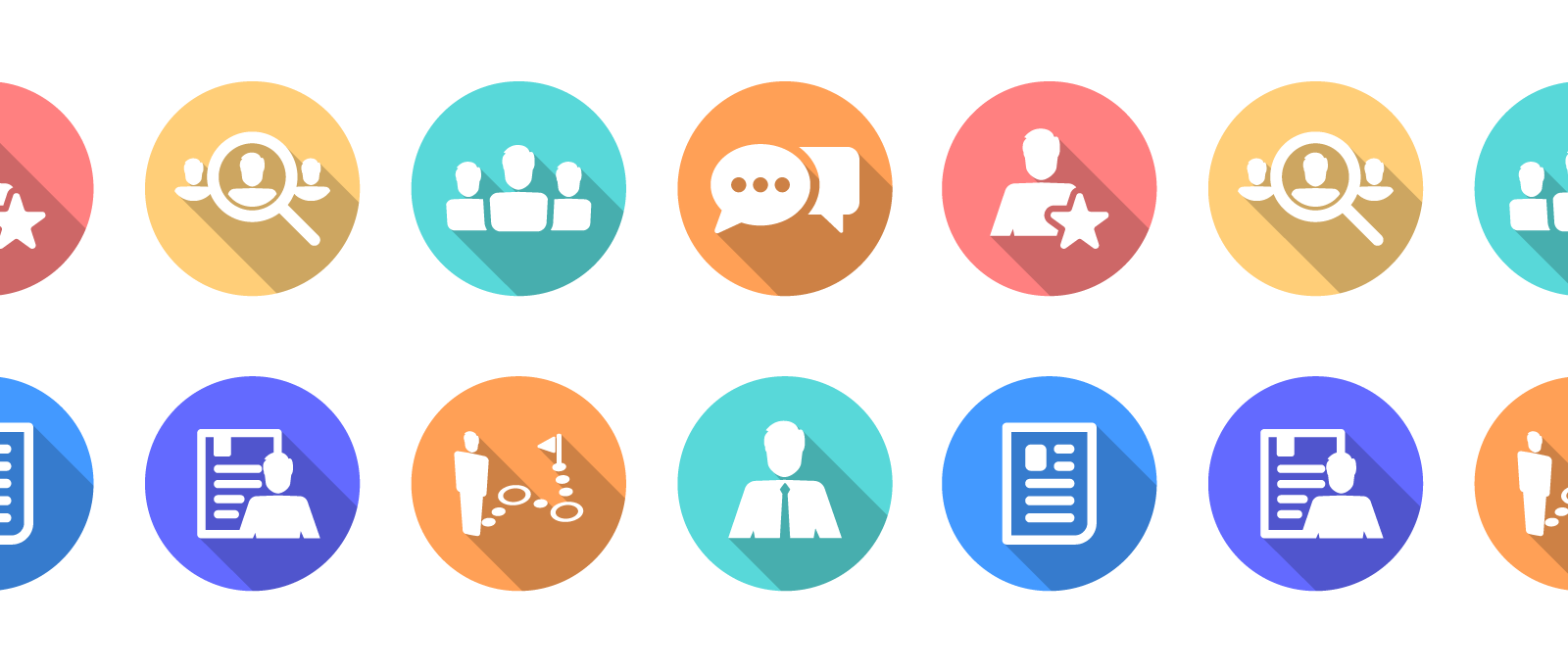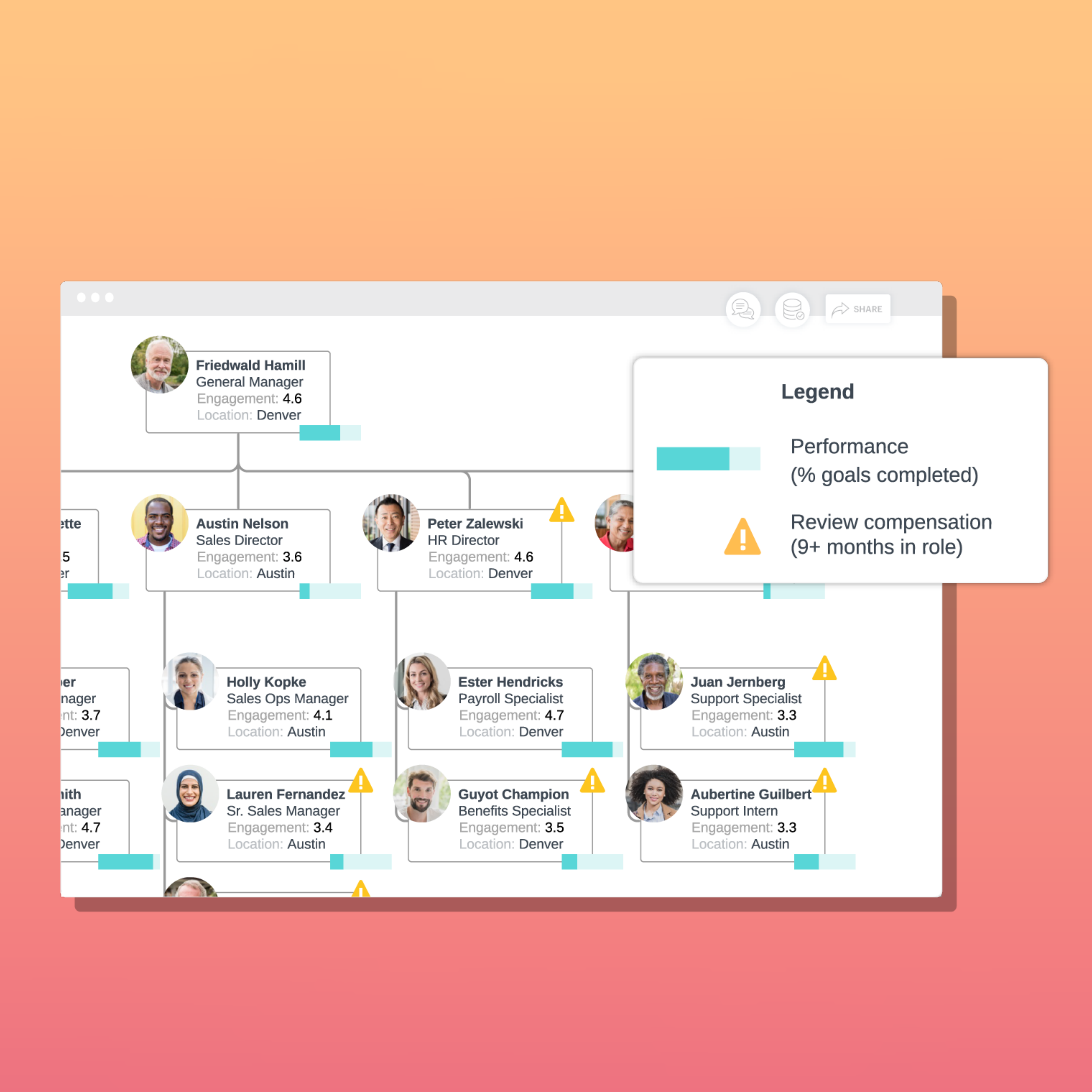
Employee retention strategies: How to keep your most valuable resource
Lucid Content
Reading time: about 7 min
Topics:
Did you know that 31% of employees have left a job within the first six months? The cost of employee turnover can soar as high as two times the employee’s salary—that’s not even counting the potential loss of productivity, engagement, and morale for those who are left behind.
Employee retention is an organization’s ability to retain its employees. With so much at stake, companies should pay close attention to how they can reduce turnover and keep their employees for the long haul.
But how do you measure retention and, more importantly, how can you impact it?
Use the following strategies to track your retention rates and keep your employees.
How to calculate your employee retention rate
Your company’s retention rate, typically reflected as a percentage, describes how many employees stick around each year and reflects how successful your retention efforts are. For example, if the employee retention rate is 75%, that means the company retained 75% of its staff and 25% of its employees left.
You can measure the retention rate for any given period of time (over a year, a month, a quarter, or even multiple years). Comparing retention rates over similar periods, such as Q3 this year versus Q3 last year, is a good way to track progress (or lack thereof) as you implement strategies to improve retention over time.
To calculate your retention rate, divide the number of employees who stayed for the whole period you’re measuring by the number of employees at the start of that period. Multiply the total by 100 to get the percentage rate.
So, if you’re calculating the retention rate for the third quarter of the year, your math might look like this:
# of employees at the beginning of Q3: 105
# of employees who worked all of Q3: 100
100 / 105 x 100 = 95%
That means there was a 5% employee turnover or a 95% retention rate.
Your retention rate is a good number to track so you can identify how many people are leaving, when they’re leaving, and look for indicators that explain why they’re leaving.
Understanding your retention rate is the first step to understanding why your employees leave and how you can get them to stay in the future.
Top reasons for employee turnover
There are numerous reasons employees may decide to leave. Some might leave to pursue further schooling, others may be moving to another state after a spouse changes jobs, and some leave because they aren’t satisfied with the job.
You can’t always predict or prevent employee turnover—especially when the reasons are external (like a move). However, there are plenty of other reasons employees may be dissatisfied at work, and you should try to address these situations.
No opportunities to grow or advance
Employees who don’t feel like they have challenging work or a path for advancement at your company aren’t going to stick around for long. Most people don’t want to feel stuck—they want direction and forward momentum.
Do you have an employee development program? How do you foster professional development and ongoing learning in your organization? Are there natural career paths for your employees to grow into throughout their tenure?
Lack of growth opportunities will force many top employees to find those opportunities at another company.
Lack of recognition
Everyone likes to feel respected and appreciated and your employees are no different. Companies that don’t regularly recognize good work may be alienating their best people.
Encouragement, positive feedback, and recognition (formal, private, and public) are key to making your employees feel seen and valued. If those elements are missing from your company, both at the organization level as well as at the team and individual levels, you will have a difficult time retaining talent.
Poor management
As the saying goes, employees don’t leave companies, they leave their boss. Pay attention to which employees are leaving and what teams or departments they’re in. It may be that there’s nothing wrong with the work itself but the management structures in your office.
If you see more turnover in a particular department, identify your key leaders and work with them to find solutions. You may need to provide better management training, clarify roles, or move people around for a better personality fit within teams.
Employee retention strategies
You’ll likely never reach 100% retention. But there are strategies you can use to improve your retention rate and foster a culture of happy, productive, and invested employees.
Improve recruiting
Retaining talent starts at recruitment. As you evaluate your hiring practices, consider:
- Who are your ideal candidates?
- Are you targeting the type of people who will fit the role as well as the team and company culture?
- Do the job descriptions accurately depict the work and role?
When the reality of the job doesn’t meet an employee’s skill set or expectations, they become a turnover risk.
Don’t shy away from providing honest job previews that describe not only the tasks or responsibilities of the job, but also other elements like the level of collaboration involved, performance benchmarks, and review timelines.
Invest in your onboarding process
Once you’ve hired your ideal candidates, the next step is to orient them to the work and your company with a thorough onboarding process. Glassdoor reports that organizations with a strong onboarding process improve new hire retention by 82%.
Turnover is often high among new employees who don’t feel socialized, engaged, or invested in the culture and vision of the company. A good onboarding process can help your new hires build relationships with their new coworkers, feel confident in their work, and integrate into the organization successfully.
Your onboarding program might include:
- Clear training and orientation to the job functions, technology, applications, and company structure
- A designated mentor for each new employee to learn from and rely on
- A tour of the office building and other company facilities
- Review of the company’s policies, standards, and procedures, including benefits and time-off
Lucidchart can help you build flowcharts to standardize your onboarding processes so each employee has a streamlined experience. Plus, you can create org charts to help new hires quickly understand your company’s structure and the roles of each department, team, and individual.
Offer competitive pay and benefits
It should be obvious, but many companies still fail the compensation test when it comes to addressing employee concerns.
If you are struggling to keep your top talent, take a close look at your compensation and benefits packages. With many industries competing for the same small pool of talent, offering enticing pay and the right benefits can give you the competitive edge you need to attract and retain employees.
Research what similar companies are paying their employees and make sure you are competing in the same range. It may be time to update your pay scale or look into improving your benefits.
Today, employees particularly value companies that offer great health insurance benefits, as well as generous parental leave and PTO.
Final takeaway: Listen to your employees
Fixing your retention rates won’t happen overnight. But by addressing the key areas that impact employee satisfaction and success, you will start to see a shift.
In other words, give your employees what they want and they will repay you with great work and long-term investment in your organization.
If you’re not sure what your employees want, ask!
Use exit interviews with soon-to-be-former employees to find out what went wrong and get feedback on where to improve. Conduct regular reviews and surveys following training, onboarding, and performance benchmarks.
Bottom line: Keep the lines of communication open, and you might be surprised by what you learn.

See how you can use Lucidchart to create effective recruiting and hiring processes and see employee data in context.
Learn moreAbout Lucidchart
Lucidchart, a cloud-based intelligent diagramming application, is a core component of Lucid Software's Visual Collaboration Suite. This intuitive, cloud-based solution empowers teams to collaborate in real-time to build flowcharts, mockups, UML diagrams, customer journey maps, and more. Lucidchart propels teams forward to build the future faster. Lucid is proud to serve top businesses around the world, including customers such as Google, GE, and NBC Universal, and 99% of the Fortune 500. Lucid partners with industry leaders, including Google, Atlassian, and Microsoft. Since its founding, Lucid has received numerous awards for its products, business, and workplace culture. For more information, visit lucidchart.com.
